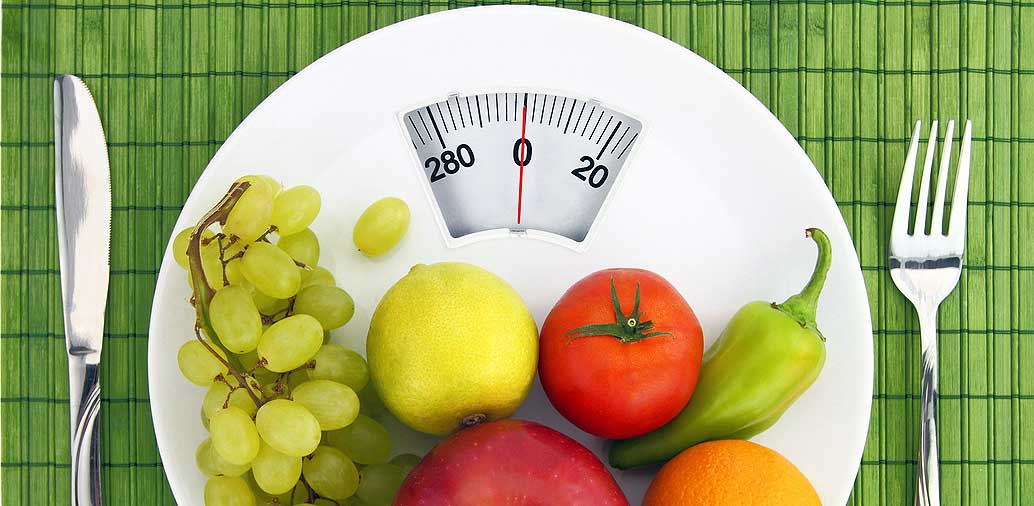Fruits and Veggies For Weight Loss

Fruits and Veggies For Weight Loss
At the Pritikin Longevity Center, fruits and veggies are rock stars. From fresh mango to roasted Brussels sprouts, they’re bountiful at the health resort, and delicious. For 40-plus years, Pritikin’s faculty has been praising them for their health and weight-control benefits.
Now more evidence, presented at the European Congress on Obesity in Portugal, has affirmed their power in helping us keep off the pounds.
Scientists from the University of Navarra and the Carlos III Institute of Health, both in Spain, followed more than 16,000 young adults for a total of 10 years.
When the study began, the subjects were fresh out of college. All were healthy. None was obese. They filled out detailed food questionnaires. The researchers scored each participant on the types of food he or she ate.
More Plant Foods, More Points
Points were given for eating plant food groups that included:
- Vegetables
- Fruits
- Legumes (such as peas, beans, and lentils)
- Potatoes
- Whole grains
- Nuts
More Animal Foods, Fewer Points
Points were subtracted for eating animal foods such as:
- Meat
- Dairy (for example, butter, cream, and cheese)
- Eggs
- Fish
Based on their scores, the young adults were categorized into five groups.
The Big Fruit-and-Veggie Eaters | Quintile 5
Those eating the most plant foods and the least animal foods were placed in Quintile 5.
The Big Meat Eaters | Quintile 1
Those who ate the least plant foods and the most animal foods were put into Quintile 1.
Everyone in between fell into Quintiles 2, 3, and 4. (Essentially, the higher the quintile number, the more plant-based the grads’ diets were.)
A Decade Later
After 10 years, nearly 600 of the 16,000 participants had become obese.
What the Obese Had In Common
The researchers found that Quintile 5, the group who ate the most fruits, veggies, and other plant foods, ended up with a 43% reduced risk of obesity compared to Quintile 1, the big meat eaters.
For Quintiles 2, 3 and 4, the reduced risk of obesity was 6%, 15% and 17%, respectively, compared to Quintile 1.
-
Fish
Although fish was categorized into the animal foods group, it had virtually no effect on obesity rates because there was very little difference in the amount of fish that any of the five groups ate.
-
Meat
That was not the case for meat. There were major contrasts in meat consumption. Those who ate the most meat (Quintile 1) averaged about 200 grams every day. (200 grams is approximately the weight of a 7-ounce steak.)
The group eating the least amount of meat (Quintile 5) averaged 142 grams daily, which is roughly the size of a 4-ounce serving of cooked fish or skinless chicken breast. It’s the same amount (about the size of a deck of cards) recommended by the Pritikin Eating Plan. -
Vegetables
An even greater contrast was seen with vegetable intake. Meat-eating Quintile 1 ate 3 servings daily. Veggie-eating Quintile 5 averaged 6½ servings daily.
-
Fruit
Major differences were also found with fruit intake. The meat eaters in Quintile 1 averaged just 1 serving of raw, fresh fruit daily. Quintile 5, the fruit-and-veggie eaters, averaged 3½ servings.
Interestingly, the results held true irrespective of other factors, including family history of obesity, physical activity, snacking between meals, alcohol intake, smoking, sleep duration, sex, and age.
One caveat: The findings were based only on associations between dietary factors and obesity, not cause and effect.
“But these observations certainly validate the mountains of data we already have affirming the benefits of fruits, vegetables, and other whole plant foods like potatoes and legumes for weight control,” asserts Kimberly Gomer, MS, RD, Director of Nutrition at the Pritikin Longevity Center in Miami, Florida.
Fruits and Vegetables For Weight Loss | Summing Up
This new research from Spain found that for long-term weight control, you want lots of fruits and vegetables in your daily life. How much?
“For each meal, aim for a plate that is at least half full of fruits and veggies,” counsels Pritikin dietitian Kimberly Gomer.
The Pritikin Eating Plan recommends at least 5 servings of vegetables and 4 servings of fruit daily, which is very similar to the amounts that the star fruit-and-veggie eaters consumed in this recent study from Spain.
How do you make that happen? In a world of pizza, bacon cheeseburgers, and brownies, how does one develop a taste, a fondness, for fruits and veggies?
“It’s often not easy,” acknowledges Kimberly, “but it’s very doable, especially in an environment like Pritikin. Sure, for the first couple of days, pure foods like fruits and veggies might seem, well, blah. And why wouldn’t they? Their subtler flavors can’t compete with the intensely sweet, salty, and fatty flavors that many people have become accustomed to.
“But soon, very soon, palates change. Taste buds open up. Our guests start saying things like, ‘Wow, I didn’t know a slice of cantaloupe could taste so good!’ We love hearing that,” she smiles.
“So wipe the slate clean. Get away from all the junk. Come to Pritikin. Give your taste buds a chance to discover that good, healthy food can actually taste good, too. Invest in your health.
“When you think about it, what’s more important?”